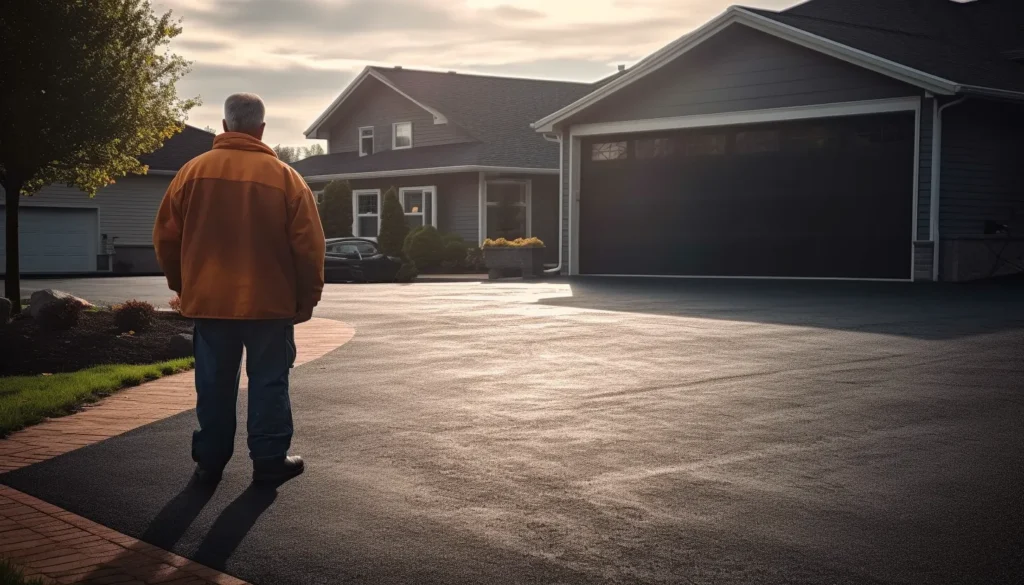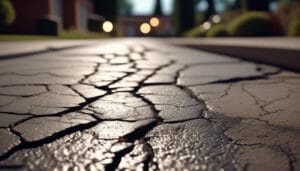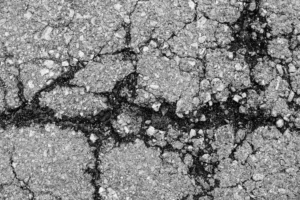Are you looking to improve your home’s curb appeal? Blacktopping your driveway is an easy and relatively inexpensive way to do just that.
With a little bit of preparation and the right materials, you can complete the job yourself in just a few steps.
In this article, you’ll learn how to blacktop a driveway with detailed instructions on gathering materials, preparing the surface, applying the blacktop, and finishing the job. With the right preparation and attention to detail, you can achieve a professional-looking finish that will last for years.
Gather the Necessary Materials
Gathering the materials you need is the first step to get the job done right. Choosing the right materials for your blacktop driveway is essential for achieving the desired result. To do this, consider the type of surface you will be working on and the type of traffic it will receive.
Once you have determined the right materials, consider the supply costs associated with purchasing them. Make sure to also factor in the cost of renting or purchasing any necessary tools or equipment.
When it comes to selecting the right materials, the most common choice is asphalt or tar, which is a combination of asphalt and stone.
You should also consider the grade of asphalt or tar you will be using, as it will affect the cost and quality of the finished product. If you are unsure of which material is best suited for your project, consult with an asphalt paving contractor.
Finally, you should also consider the amount of time and effort it will take to complete the job. Asphalt paving is a labor-intensive process, so it’s important to make sure that you have the necessary time and resources to complete the project.
Furthermore, make sure that you have the proper safety gear, such as gloves, masks, and goggles, to protect yourself from any potential hazards.
Prepare the Driveway
Before beginning the process of blacktopping your driveway, it is important to ensure that the existing surface is removed, the ground is leveled, and a suitable base is installed. All of these steps are necessary for a successful installation.
First, the existing surface must be removed to ensure that the new blacktop will adhere to the driveway. Then, the ground must be leveled for the new pavement to be smoothly installed.
Finally, a suitable base must be placed in order to provide a sturdy foundation for the asphalt.
Remove Existing Surface
Grab a shovel and start chipping away at the existing surface – it won’t take long to get the job done! Before installing a new blacktop surface, it’s important to remove the existing layer.
Here are a few tips to keep in mind to help you remove the existing surface:
- Gather the necessary tools, such as a shovel, a wheelbarrow, and a pick or jackhammer.
- Begin by breaking up larger chunks of asphalt with a pick or jackhammer.
- Use a shovel to scoop out the smaller pieces and place them into a wheelbarrow for easy disposal.
Removing the existing surface is a labor-intensive job, but with the right tools and a little elbow grease, you can easily remove the existing layer and prepare the base for a new blacktop surface.
Level the Ground
Get ready for a new and improved surface – it’s time to level the ground! Before laying down a fresh layer of blacktop, the ground must be leveled and prepared correctly.
This is an important step in the process as it ensures water drainage is properly managed and soil compaction is achieved. To begin, use a shovel and a rake to remove any rocks, grass, or debris that may be present.
Make sure to get the ground as level as possible.
You may need to use a tamper to help with the compaction of the soil. This helps reduce the potential for settling after the blacktop is applied.
With the ground properly prepped and ready, you are one step closer to having a brand-new driveway surface.
Install Base
After prepping the ground, it’s time to move on to the next step and install the base! Let’s get started and lay the groundwork for a great driveway surface. Installing a base is an important part of ensuring the longevity of your driveway.
It’s essential to take the time to perform a cost analysis of the materials you will need and to consider the sustainability options available. Here’s a breakdown of what you’ll need to do:
- Gather Materials: Before starting, make sure you have the right amount of gravel, stone, and other materials necessary for the project.
- Spread and Level: Once you have the materials, spread and level them across the surface of your driveway. Make sure to tamp the materials down to create a stable base.
- Check for Level: Once you have finished spreading and leveling the materials, use a level to make sure everything is even. If it’s not, you’ll need to make adjustments until it is.
Installing the base is an important part of ensuring the longevity of your driveway. With careful cost analysis of the materials you need and consideration for sustainability options, you can properly prepare the base and create a great surface for your driveway.
Install the Blacktop
Installing the pavement will create a smooth surface for you to enjoy. First, use stone edging to create the outline of the driveway, then add a sub-base of compacted gravel and sand. To ensure proper drainage, consider any natural or man-made drainage options.
Finally, lay the blacktop down in a series of small sections, using a tamper to compact the material between each layer.
| Step | Description | Tools Needed |
|---|---|---|
| 1 | Lay out stone edging | Tape measure, shovel, level |
| 2 | Add sub-base of gravel and sand | Gravel, sand, trowel, tamper |
| 3 | Install drainage | Drainage materials, shovel, tamper |
| 4 | Install blacktop | Blacktop, tamper |
For the actual install, begin by laying the paving stones along the desired shape of the driveway. Make sure the stones are level with one another and fill any gaps with sand.
Then add a sub-base of sand and gravel, tamping it down with a tamper. Consider any natural or man-made drainage options to ensure proper water flow and avoid flooding.
Finally, lay the blacktop down in small sections, using a tamper to compress the material between each layer. Do this until the entire driveway is covered. With the right planning and attention to detail, you can create a driveway that looks and functions great.
Smooth the Surface
Once the blacktop is laid, use a roller to smooth the surface and create a beautiful finish. The roller should be filled with water and when rolling, it should be pushed with a slow and steady pace. To ensure the surface is even and smooth, roll the blacktop in both directions. Here’s a 4 item numeric list of the steps to take:
- Fill the roller with water
- Roll the blacktop in both directions
- Repair any cracks or other imperfections
- Resurface the area if necessary
Once the blacktop is rolled, it’s important to check the surface for any cracks or other imperfections. These issues should be repaired using a patching compound and sealed to ensure they don’t reappear.
In some cases, the entire area may need to be resurfaced in order to create a smooth and even surface. Use a patching compound to fill any large holes and then seal the area to ensure a strong and durable surface.
The combination of rolling and patching the surface will create a beautiful and smooth appearance that will last for years to come.
Taking the time to properly repair and seal the blacktop will help protect the surface from wear and tear and prevent future damage.
Smoothly rolling the blacktop and addressing any imperfections will ensure a beautiful and long-lasting driveway.
Seal and Finish the Driveway
To protect your investment and keep it looking great for years to come, sealing and finishing the surface is the final step in the process.
Depending on the type of sealer used, it can help protect your driveway from gas, oil and other harmful liquids. It can also help protect it from weathering, fading, and cracking. Before you seal the driveway, it’s important to evaluate the cost and safety precautions.
| Type of Sealer | Benefits |
|---|---|
| Acrylic | Protects from gas, oil, and other liquids |
| Asphalt | Protects from weathering, fading, and cracking |
| Coal Tar | Protects from UV rays, water, and oxidation |
The type of sealer you choose will depend on the condition of your driveway. If you have a lot of cracks and potholes, you might want to use a sealer with more filler. If you have a newer driveway, you might want to use a sealer with fewer solvents.
Make sure you read the instructions on the sealer and follow them closely. It’s also important to wear protective clothing and use the proper ventilation when applying the sealer.
Sealing and finishing your driveway is an important step that should not be overlooked.
In addition to protecting your driveway from the elements, it can also help to increase the value of your home. With the right sealer and a little elbow grease, you can have a driveway that looks great and will last for years.
Conclusion
Now that your driveway is blacktopped, you can enjoy the beautiful look and durability of your new surface.
You can have peace of mind knowing that your driveway will be able to withstand whatever Mother Nature throws at it. Your driveway should last for years to come, giving you a beautiful, low-maintenance surface that you can be proud of. Congratulations – you’ve done a great job!



